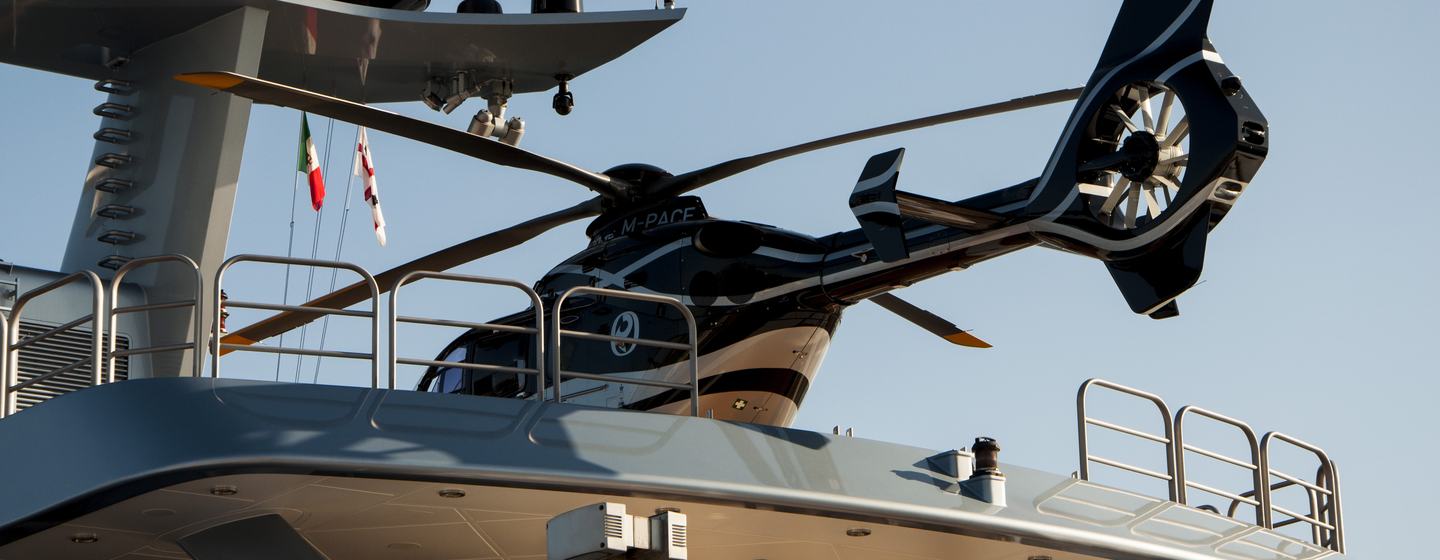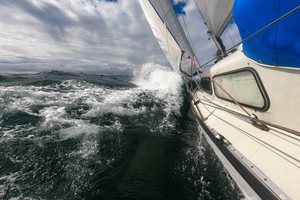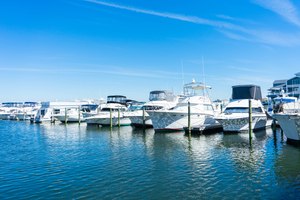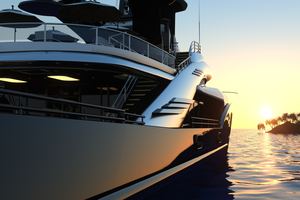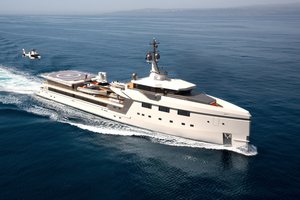ut beyond the glamour lies a serious world of engineering, regulation, and safety. Installing a helipad requires more than aesthetics; it demands naval-architectural expertise, aviation compliance, and precise operational planning. In this guide, we’ll explore the realities behind yacht helipads — from structural design and legal frameworks to crew training and future innovations, since yacht owners face various considerations when planning helipads for the world’s biggest yachts.
The image of a helicopter landing on the aft deck of a gleaming yacht has become a symbol of modern wealth and mobility. Yet few realize that a yacht helipad is not merely a luxury accessory but a complex intersection of maritime engineering and aviation law. Load-bearing structures must withstand dynamic rotorcraft forces; crew must train for firefighting and emergency scenarios; and every landing is subject to international and local aviation rules.
For yacht buyers, captains, and designers, understanding helipad integration is essential to safety, compliance, and long-term value. Let's break down the practical and regulatory landscape of yacht helipads, with insights drawn from naval architecture, aviation operations, and luxury market trends.
- Beyond Convenience: The Many Uses of Yacht Helipads
- Prepare for Landing: Yacht Helipad Regulations
- The Grey Area: Best Practices in Yacht Helipad Use
- What are the minimum size requirements for a yacht helipad?
- How Much Does It Cost to Install a Helipad on a Superyacht?
- The First Helipad Yacht
- The Next Level
- Yacht Owners
Beyond Convenience: The Many Uses of Yacht Helipads
The most obvious use of a yacht helipad is a direct access — stepping off a jet and flying straight to the yacht. This saves hours of tender rides or airport congestion. For owners who split time between meetings on land and relaxation at sea, the helipad becomes a personalized transit hub.
Time is the one luxury even billionaires can’t buy; the helipad converts wasted travel hours into extra leisure or business time.
Business and Executive Mobility
Yachts are increasingly used as floating boardrooms. A helipad allows executives to arrive for day trips, conduct meetings, and depart without requiring overnight stays. In practice, this makes the yacht an extension of the corporate jet network — think of it as “point-to-point” air-sea mobility for high-net-worth individuals who run global enterprises.
Yacht Helipads for Medical Emergencies
A helipad can serve as a critical medical evacuation point. In remote cruising grounds — think South Pacific or high latitudes — the ability to land a medevac helicopter may literally save lives.
This is not just theoretical! Insurers often highlight helipad access as a factor reducing response time and mortality in at-sea emergencies.
Provisioning and Logistics
Helicopters aren’t just for people — they can deliver high-value or urgent supplies (e.g., critical spare parts, specialist chefs, medical professionals, or technical crew). While most provisioning still comes by tender, the helicopter allows just-in-time logistics that keep itineraries on track when unexpected equipment failures or guest demands arise.
Yacht Helipads for Expedition and Exploration
On explorer yachts, helipads are used for reconnaissance, scouting anchorages, or accessing inaccessible terrain (mountains, ice fields, remote fishing spots). The helipad here isn’t about status — it’s an operational necessity, expanding the yacht’s reach into areas where tenders cannot go.
Security and Privacy of Yachts with Helipads
A helipad allows owners and VIPs to bypass crowded marinas, paparazzi, or unvetted tender transfers. Discreet arrival by helicopter offers maritime privacy and controlled access. For UHNW families concerned with security, the helipad is a controlled choke point — every arrival can be pre-cleared, reducing exposure risks.
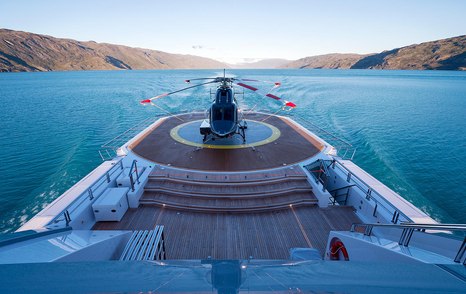
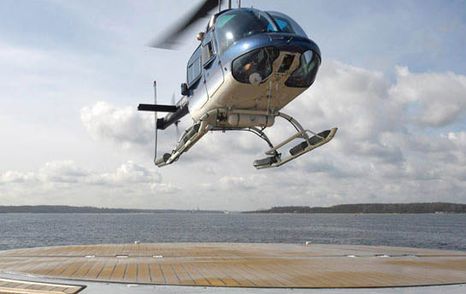
RFrom a financial perspective, a yacht with helipad has increased both charter appeal and resale premium. Many charter clients rank helicopter access among their top “must-have” amenities. Brokers note that yachts with certified helipads command higher day rates, particularly in remote charter destinations like Norway, Greenland, or the Maldives.
Emergency Preparedness (Disaster or Conflict Zones)
Some owners see helipads as part of a resilience strategy. In scenarios of political instability, natural disaster, or sudden evacuation needs, helicopters provide fast exit routes. While rarely advertised, this is increasingly a talking point in UHNW circles focused on continuity and safety planning.
Lifestyle Enhancements
It’s not just practical — helipads are used for leisure flights, scenic tours, or hopping to exclusive events (Monaco GP, Cannes Film Festival). A helipad turns the yacht into a basecamp for the luxury lifestyle, extending its reach from sea to sky.
All in all, a yacht helipad is far more than a luxury ornament. It is a mobility multiplier, a safety net, a charter premium driver, and, in the case of explorer yachts, an operational necessity. Owners who view it purely as a status symbol miss its deeper role as a strategic asset in both lifestyle and logistics.
Here's a short summary of helipad use for yachts and beyond:
| Primary Use | Benefit (why owners do it) | Practical Challenge (what to plan for) |
|---|---|---|
| Owner & Guest Transfers | Massively reduces transfer time and touchpoints; enables truly private door-to-door travel, improving guest experience and itinerary flexibility. | Requires certified operators, advance permits at ports, and coordination with flight logistics; noise and community impact can restrict ops in certain locations. |
| Business & Executive Mobility | Enables "floating boardroom" model — quick executive drop-ins for meetings without overnight commitments; boosts productivity and perceived prestige. | Operationally sensitive: scheduling, secure comms, and meeting confidentiality must be managed; also increases insurer scrutiny of commercial use. |
| Medical Evacuations (Medevac) | Drastically shortens emergency response time in remote cruising areas; can be lifesaving and may lower medical-evacuation costs/risks. | Needs pre-agreed medevac protocols, trained crew, and 24/7 operator availability; not all helipads are suitable for night or winch ops required by medevac teams. |
| Provisioning & Urgent Logistics | Enables just-in-time delivery of high-value spares, specialist crew, or urgent supplies that would otherwise delay itineraries. | Higher cost per lift vs tender; handling and secure transfer logistics on deck demand strict procedures and often temporary staffing changes. |
| Expedition & Reconnaissance | Extends reach into inaccessible regions (glaciers, remote islands) and enables scouting for anchorages or scientific ops — operationally transformative for explorer yachts. | Requires robust environmental risk assessments, experienced pilots, and often bespoke permits for landing ashore; weather windows can be limiting. |
| Security & Controlled Access | Provides a secure, pre-cleared access point that reduces exposure to uncontrolled tender transfers and paparazzi — useful for high-profile owners. | Heightened privacy/security needs increase cost (guards, pre-clearance) and can complicate port relationships if operations appear exclusionary. |
| Resale & Charter Value | Helipads increase charter desirability and can lift resale premiums, particularly for yachts marketed to HNW/celebrity clients or remote destinations. | Must be certified/insured and advertised accurately; uncertified or poorly documented pads can deter buyers and reduce perceived value. |
| Emergency Preparedness / Evacuation | Acts as a resilience asset in crises (natural disaster, civil unrest) offering rapid evacuation or support capability for guests and crew. | Planning for such scenarios requires integrated continuity planning, legal advice for cross-border evacuations, and standby operator arrangements. |
| Lifestyle & Leisure (scenic flights, events) | Enhances guest experience — scenic hops, event access (regattas, film festivals) and quick island-hopping add distinct lifestyle value. | Frequent leisure ops drive wear, require strict FOD control, and can trigger local noise restrictions; operators may impose limits on repetitive scenic flights. |
Tip: match pad design and certification to the dominant use-case (e.g., medevac vs occasional VIP transfers) to control cost and operational risk.
How do yacht helipads differ from land-based helicopter landing areas?
Marine helipads require enhanced structural design for dynamic loading, corrosion-resistant materials rated for saltwater environments, and motion-compensated approach lighting systems. The touchdown surface must provide friction coefficient of minimum 0.6 when wet, significantly higher than terrestrial requirements.
The primary structural difference lies in fatigue analysis - yacht helipads experience millions of stress cycles from wave action, requiring specialized aluminum or composite construction. Surface coatings must prevent ice formation while maintaining skid resistance, leading to innovative solutions like embedded heating elements and specialized non-slip textures that remain effective in all weather conditions.
Prepare for Landing: Yacht Helipad Regulations
Landing a helicopter on a yacht involves two primary methodologies. The touch-and-go method, reserved for non-commercial operations, somewhat lacks stringent guidelines. In contrast, the fully certified or 'commercially-certified' approach, which adheres to the standards of the Commercial Yacht Code sanctioned by the Maritime and Coastguard Agency, is becoming more prevalent.
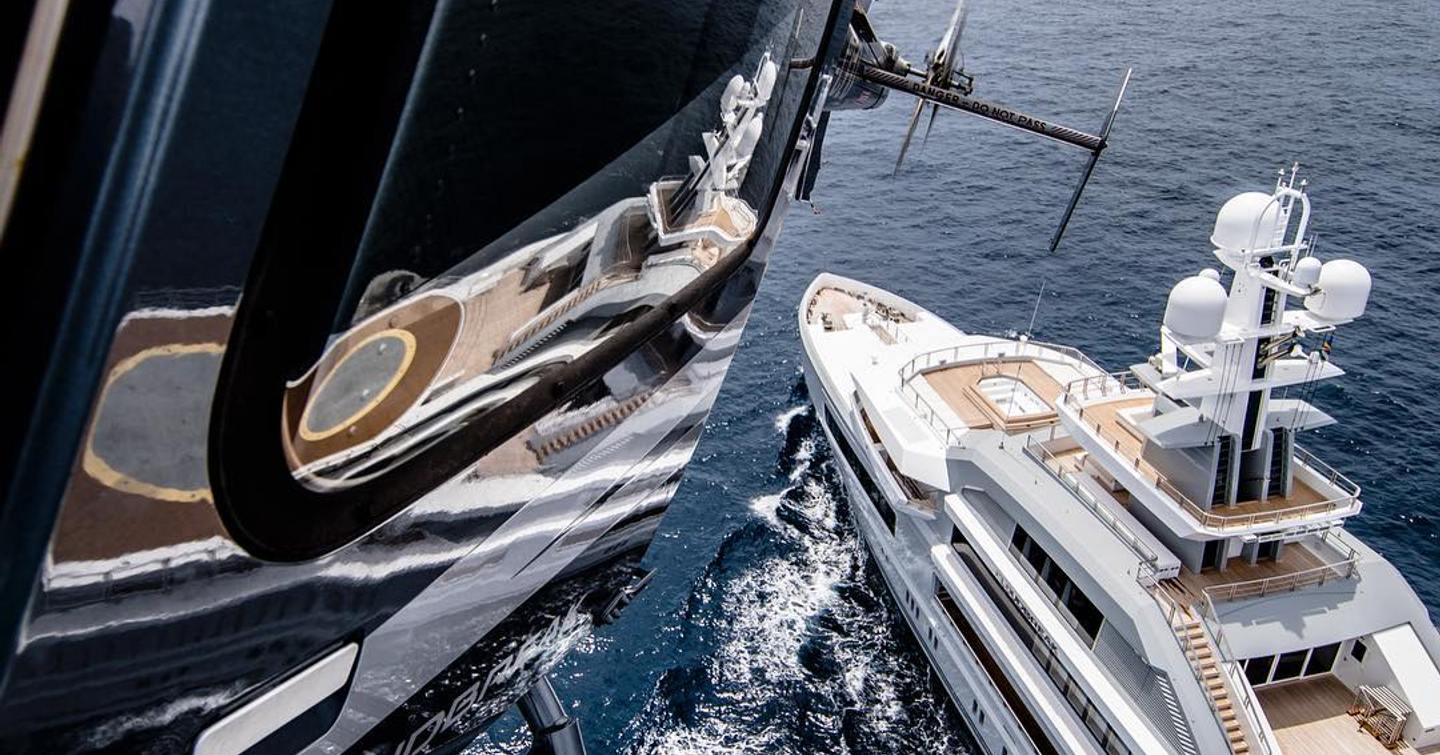
Why Cerfitication Matters
| Aspect | Requirement | Implication for Yacht Owners |
|---|---|---|
| Regulatory Compliance | Commercial helicopters must land only on certified helipads. | Uncertified pads limit operations to private/non-commercial use only. |
| Construction Standards | Helipad must be built to meet structural and safety codes. | Requires naval architects and aviation consultants in design stage. |
| Design Criteria | Must accommodate rotor diameter, weight, and approach path. | Impacts yacht layout, balance, and usable deck space. |
| Operational Standards | Safety zones, firefighting systems, and crew training are mandatory. | Owners must budget for ongoing training and compliance checks. |
| Certification Process | Helipad must be formally inspected and approved by authorities. | Without certification, charter and resale value can be significantly reduced. |
What Safety Systems Are Mandatory for Yacht Helipads?
CAP 437 (Civil Aviation Publication) and IMO guidelines require multiple integrated safety systems. Primary requirements include AFFF (Aqueous Film Forming Foam) fire suppression systems capable of delivering foam at 6.5 liters per minute per square meter, perimeter safety netting with 150mm maximum mesh size, and emergency lighting systems with battery backup lasting minimum 90 minutes.
The most sophisticated systems integrate thermal imaging for automatic fire detection, wind measurement systems that automatically communicate with approaching aircraft, and remote monitoring capabilities allowing bridge control of all helipad systems. Advanced installations include retractable safety barriers that deploy automatically when helicopters approach, significantly reducing crew exposure during operations.
Technical Definitions and Abbreviations
IMO (International Maritime Organization): The United Nations specialized agency responsible for regulating shipping and maritime safety standards globally. Established in 1948, the IMO develops international conventions and codes that govern vessel construction, equipment standards, and operational procedures. For yacht helipads, IMO guidelines establish minimum safety requirements, structural standards, and certification procedures that must be followed regardless of flag state registration.
CAP 437 (Civil Aviation Publication 437): The UK Civil Aviation Authority's comprehensive guidance document titled "Standards for Offshore Helicopter Landing Areas." Originally developed for North Sea oil platforms, CAP 437 has become the de facto international standard for shipborne helicopter operations. The publication covers detailed specifications for helipad dimensions, lighting systems, safety equipment, and operational procedures. Many flag states and port authorities worldwide accept CAP 437 certification as meeting their local requirements.
AFFF (Aqueous Film Forming Foam): A specialized fire suppression agent that creates a thin aqueous film on hydrocarbon fuel surfaces, preventing vapor release and suppressing ignition. AFFF systems are mandatory for yacht helipads because they provide superior performance against aviation fuel fires compared to traditional water-based systems. The foam concentrate is typically stored at 3% or 6% mixture ratios and can suppress fires 3-5 times faster than water alone, critical in the confined space of a yacht helipad.
TLOF (Touchdown and Lift-Off area): The specific circular area within a helipad where helicopter skids or wheels make contact during landing and takeoff operations. The TLOF must be load-bearing, level within 1% gradient tolerance, and clearly marked with contrasting colors. For yacht applications, the TLOF diameter must equal at least the helicopter's overall length (D-value) and requires specialized non-slip surface treatments that maintain effectiveness when wet from sea spray.
The Grey Area: Best Practices in Yacht Helipad Use
The realm between 'touch-and-go' and 'fully compliant' harbors a grey area of compromises, particularly in private-use scenarios.
Global aviation regulations dictate that helicopters engaged in commercial air transport must operate to a certified helipad or, in the context of yachting, a helideck, constructed to specified standards. However, for private yacht and helicopter owners, building a helideck to the same standards or gaining certification is not mandatory for private, non-commercial use. This flexibility poses a challenge, as private helidecks may not be eligible for services from charter helicopter providers.
Even if a yacht fully complies with industry regulations and receives approval from the flag state, its crew, helicopter, and pilot remain subject to the requirements of the port state. The relevant Annex specifies that 'The landing area will be limited to receiving helicopters in the conditions agreed by the Aviation Inspection Body,' encompassing weather conditions and more.
Navigating this complex web of requirements can be overwhelming. Many yacht owners and captains opt to delegate this intricate task to specialized private agencies, ensuring compliance and orderliness before arrival.
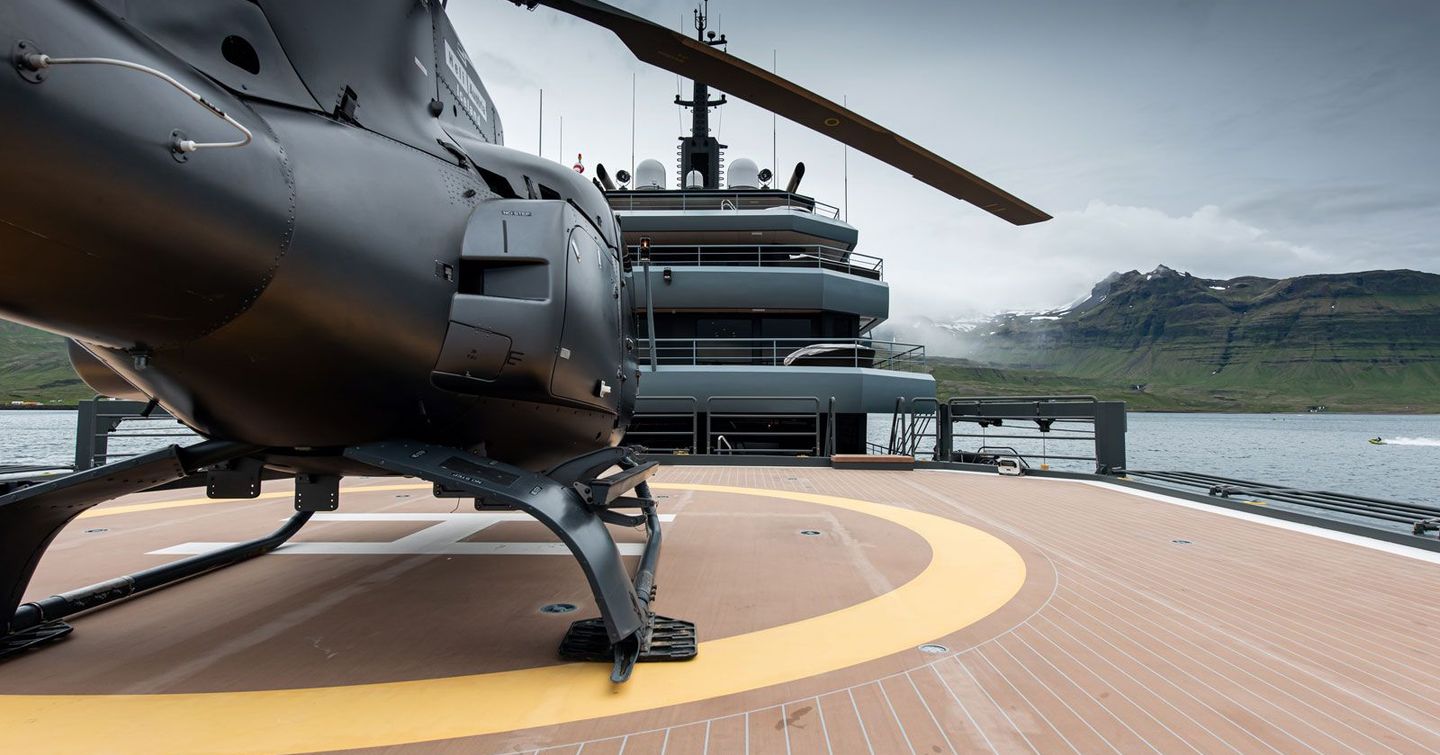
What are the Minimum Size Requirements for a Yacht Helipad?
The International Maritime Organization (IMO) mandates specific dimensional requirements based on helicopter type. For light helicopters (up to 3,175kg), the minimum landing area must be 1.5 times the helicopter's overall length in each direction. Medium helicopters require platforms measuring at least 21m x 21m, while heavy helicopters demand 30m x 30m minimum.
These dimensions represent absolute minimums - practical operation often requires 20-30% additional space for safety margins, particularly in maritime conditions where deck movement and wind shear create additional hazards. The D-value (largest overall dimension of the helicopter) becomes the critical measurement, with the touchdown and positioning marking (TLOF) requiring a circle diameter of at least 1.0 times the D-value.
What are the weather limitations for yacht helipad operations?
Operations are typically restricted to wind speeds below 35 knots, wave heights under 2 meters, and visibility greater than 800 meters. However, these limits vary significantly based on pilot certification, helicopter type, and specific vessel characteristics.
Remember, sea state presents unique challenges not found in terrestrial aviation. A yacht's motion in 1.5-meter seas creates deck accelerations of 0.3-0.5g, significantly impacting helicopter approach profiles. Advanced motion compensation systems using gyroscopic stabilization can extend operational envelopes, allowing operations in seas up to 3 meters for experienced pilots with specialized training.
How Much Does It Cost to Install a Helipad on a Superyacht?
Installation costs range from $2-8 million depending on yacht size, structural modifications required, and certification level. Basic retrofits on yachts over 80m start around $2 million, while purpose-built helipads on new construction 120m+ yachts can exceed $8 million.
Cost Breakdown Analysis:
- Structural reinforcement: 40-50% of total cost
- Fire suppression systems: 15-20%
- Lighting and navigation aids: 10-15%
- Certification and engineering: 20-25%
The most significant cost driver is structural modification - existing yachts often require substantial deck strengthening, while new builds can integrate helipad loads into the primary structure design, reducing costs by 30-40%.
The First Helipad Yacht
Lac II, a 45m (148ft) yacht constructed by Feadship in 1975 for US businessman Roy Carver, holds the distinction of being the first private yacht ever to feature a helipad. Feadship then built The Highlander in 1986 measuring 49m (162ft) and has arguably led the way for helipads on superyachts.
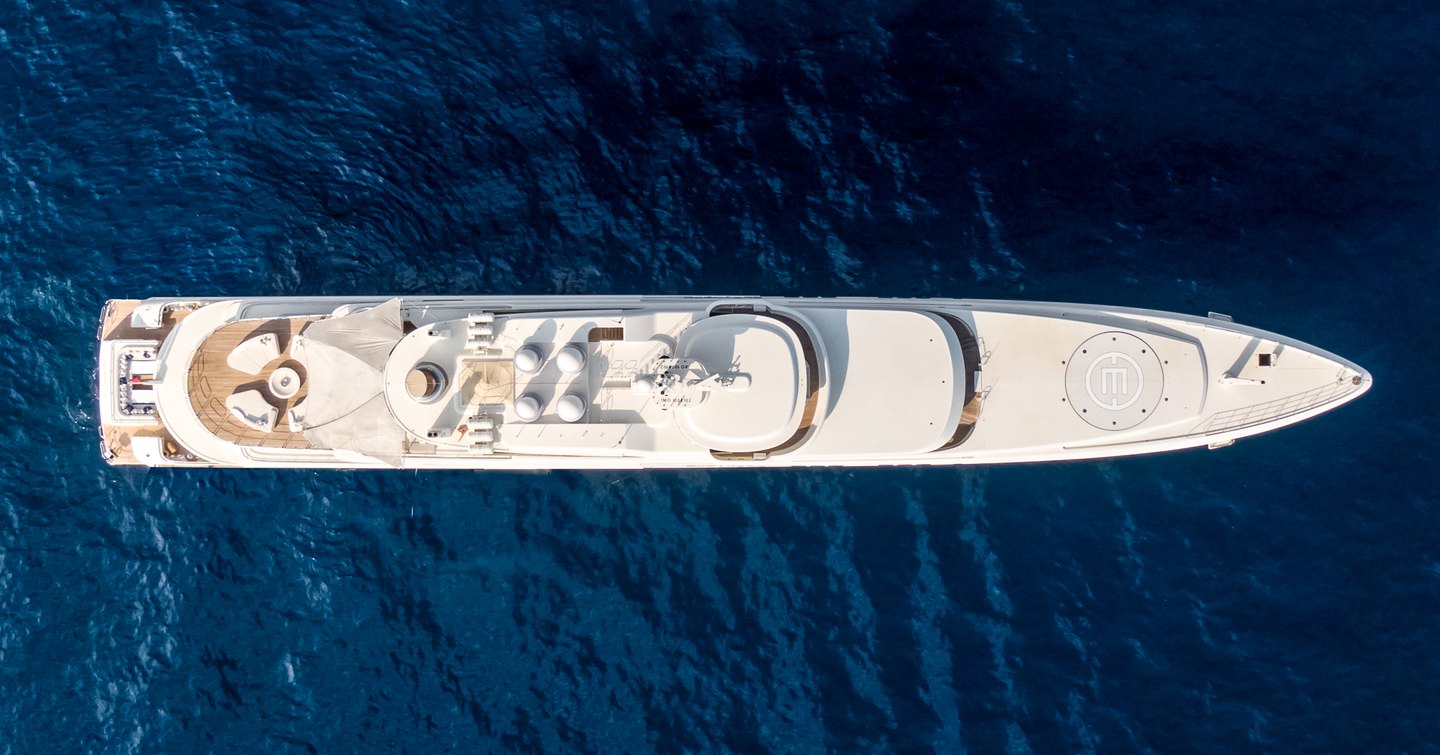
It’s time and money. Most people [who own superyachts] have the money, but they don’t have the time. A helicopter gives them that.”
Ecstasea, an 86m (282ft) superyacht built by Feadship in 2004 features two helipads; the forward one descends into the hull to become the floor of an enclosed hangar.
Feadship seemingly continued to remain ahead and launched the 81m (267ft) yacht Air, in 2011. Air made maritime history as the first superyacht constructed under Annex 2 of the Large Commercial Yacht Code (LY2) to boast a fully certified commercial helicopter pad.
The Next Level: Yachts with Helipads Take it Seriously
Certain yacht owners elevate the helipad experience to a new level, exemplified by the 142m (466ft) Lürssen motor yacht Nord, built in 2021. The first helipad is strategically positioned on the bridge deck aft, featuring an ingenious retractable hangar integrated into the superstructure when not in operation. This innovative design ensures a streamlined and unobtrusive appearance when the helipad is not in use.
Complementing this, a second, larger helipad graces the bow of the explorer yacht. This helipad comes equipped with a spacious landing deck aft and fold-down side platforms, creating a sheltered berth for the yacht's helicopters. The retractable hangar on the bridge deck efficiently conceals the aircraft within the superstructure, exemplifying the design that prioritizes both aesthetics and functionality.
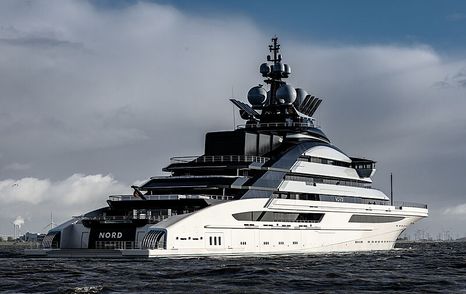
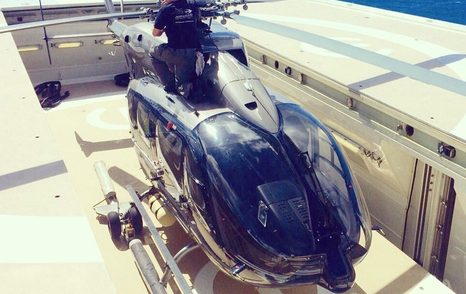
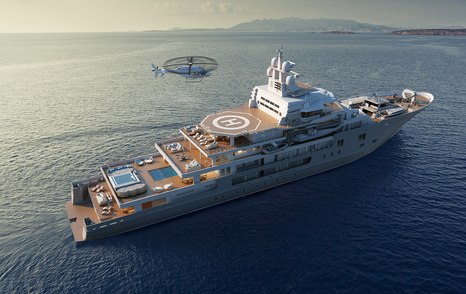
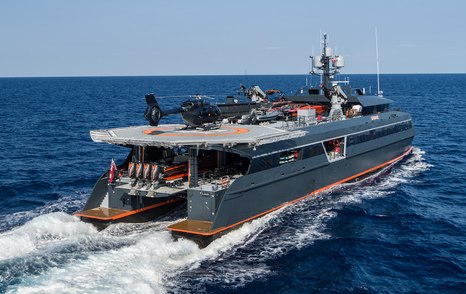
Nearly all of the world's largest superyachts now include helipads. Eclipse (162m/553ft), built by Blohm and Voss, one of the largest yachts in the world is no exception. Owned by Russian businessman Roman Abramovich, this colossal yacht not only can host three helicopters but also features a dedicated heli-garage below the foredeck.
As seen above, the landing pad on yacht Hodor is located on the bridge deck and is a certified six-ton landing pad capable of taking an Airbus H145
Yacht Owners: Not Every Helicopter Can Land on Your Yachts Helipad
Helipad certification specifies maximum aircraft weights and dimensions. Most yacht helipads accommodate helicopters up to 6,800kg (15,000 lbs), covering popular models like the Airbus H155, Bell 429, and AgustaWestland AW139. Larger aircraft require specialized certification and structural analysis.
The limiting factor is often dynamic loading rather than static weight. Maritime helipads must withstand impact forces 1.5 times greater than land-based platforms due to deck motion. Rotor downwash creates additional structural stresses - a typical medium helicopter generates downwash velocities exceeding 100 mph, creating uplift forces on deck equipment that must be factored into design calculations.
Some new superyacht owners erroneously equate a helicopter with a motor vehicle or yacht tender, assuming it can be operated with similar ease and preparation. Dispelling this misconception, it's crucial to understand that flying a helicopter requires specialized training and certification, particularly for take-offs and landings on a yacht.
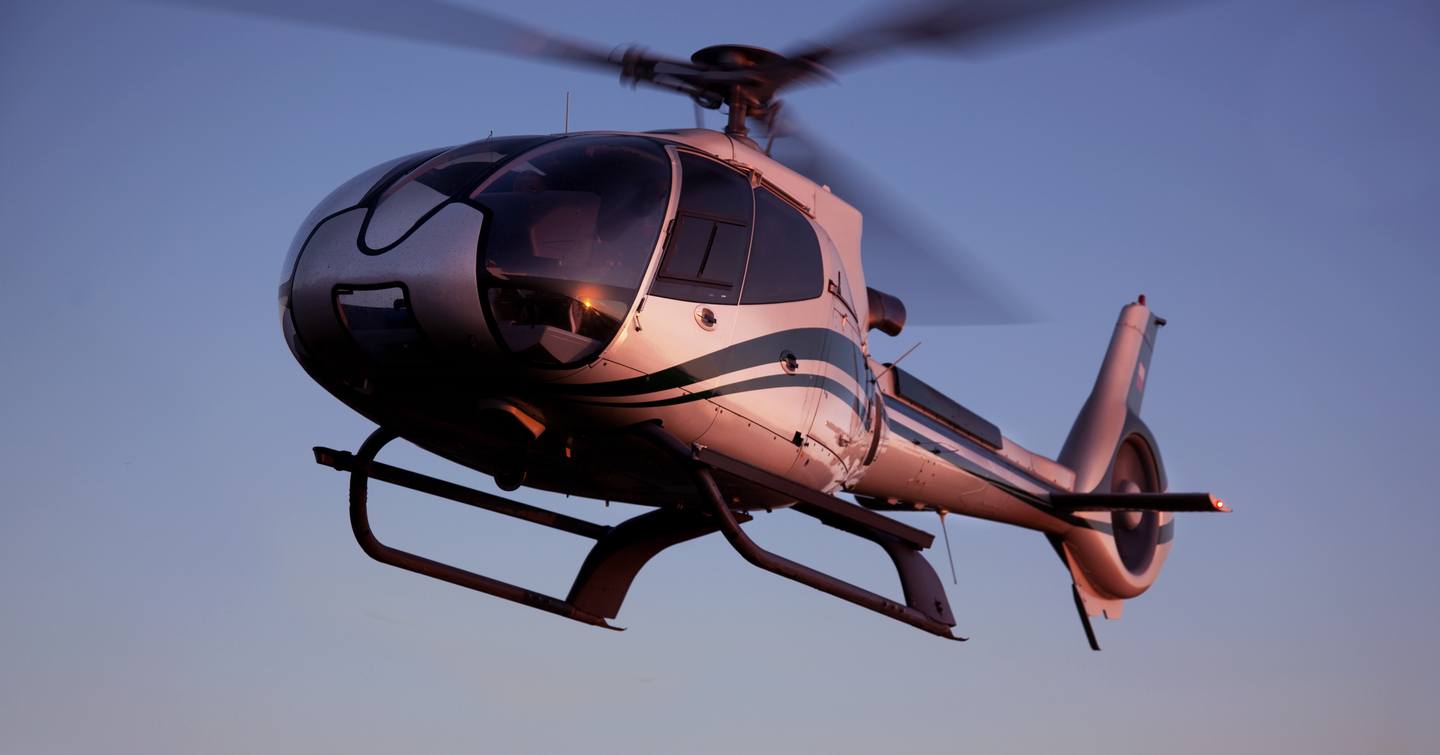
What certifications are required for yacht helipads?
Yacht helipads require certification under either CAP 437 (UK), ICAO Annex 14 Volume II, or equivalent national regulations. The certification process involves structural analysis, fire safety validation, lighting system verification, and operational procedure approval.
The certification landscape is complex because yachts operate in international waters under flag state regulations while visiting ports with local aviation authorities. This creates a web of compliance requirements - a Cayman Islands flagged yacht operating in Mediterranean waters may need to meet UK CAA standards while complying with local Italian aviation regulations. Smart operators obtain multiple certifications to ensure global operational flexibility.
How does helipad installation affect yacht stability and performance?
Helipad installation typically adds 80-150 tons to a yacht's displacement, raising the center of gravity and affecting stability calculations. Proper integration requires complete stability analysis and may necessitate ballast adjustments or fuel tank modifications.
Naval Architecture Insight
The stability impact extends beyond static calculations. Dynamic positioning during helicopter operations creates asymmetric loading that can affect yacht handling. Advanced installations include ballast transfer systems that automatically compensate for helicopter weight and position changes, maintaining optimal trim throughout landing and takeoff sequences.
The aerodynamic impact is equally significant - helipads create wind resistance that can reduce top speed by 2-5% depending on yacht design and helipad integration.
What maintenance requirements do yacht helipads have?
Helipads require monthly safety inspections, annual certification renewals, and specialized maintenance of fire suppression systems every six months. Surface treatments need renewal every 2-3 years depending on usage intensity and environmental exposure.
Maintenance Expertise
The marine environment creates unique challenges for helipad maintenance. Salt spray accelerates corrosion of aluminum components, while UV exposure degrades surface markings and lighting systems. Proactive maintenance programs include monthly structural inspections focusing on fatigue crack detection, quarterly testing of all safety systems, and annual recalibration of approach lighting systems.
The most critical maintenance element is fire suppression system integrity - AFFF foam has a limited shelf life and requires replacement every 10 years, while foam monitors need annual flow testing to ensure proper coverage patterns.
How do insurance and liability considerations affect yacht helipad operations?
Marine insurance policies typically exclude aviation activities unless specifically covered through additional premiums ranging from $50,000-200,000 annually. Liability coverage must address both maritime and aviation risks, often requiring specialized underwriters familiar with superyacht operations.
Risk Management Analysis for Yachts with Helipads
The insurance landscape for yacht helipads is complex because it sits at the intersection of marine and aviation coverage. Standard P&I (Protection and Indemnity) insurance excludes aviation activities, while aviation policies may not cover maritime operations.
Sophisticated risk management requires hybrid policies covering third-party liability up to $500 million, hull damage from helicopter operations, and business interruption if helipad certification is suspended.
The most significant liability exposure comes from third-party aircraft operations - even if the yacht owner doesn't own the helicopter, they assume substantial liability for providing the landing platform.
Ready to Explore Yachts with Helipads?
Discover a curated selection of yachts for sale on Yacht Buyer, including trusted listings of superyachts equipped with certified helipads. Whether you’re seeking ultimate privacy, seamless mobility, or enhanced charter value, our platform connects you with the right yacht for your lifestyle.
Explore Yachts for Sale